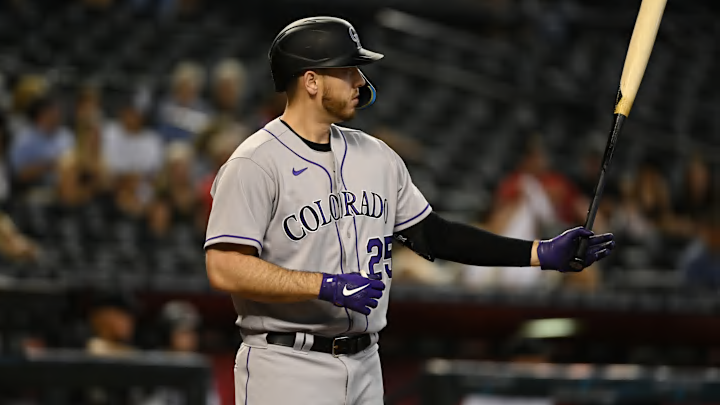NY Mets trade rumors: DH trade candidate Trey Mancini
The second designated hitter that has appeared in Mets trade rumors is Trey Mancini of the Baltimore Orioles. Mancini has been a solid hitter for the Orioles since his debut, and he is having another fine season. Mancini currently holds a slash line of .280/.354/.423, coming up in big moments for the Orioles and serving as one of the team’s leaders on the field and in the community.
At 30 years old, Mancini is in the heart of his prime, so any team interested in acquiring him would not have to worry about him declining rapidly as the season continues. Although Mancini’s power numbers are down compared to previous seasons (he has 8 home runs this year), much of that can be attributed to the Orioles radically moving back the left field fence.
Mancini is a much more valuable trade candidate than Cron for the simple reason that Mancini offers more versatility than Cron does. Although Mancini has mostly played at first base and designated hitter for the Orioles, he has also spent time at the corner outfield spots in Baltimore as well. For a team that has suffered many key injuries over the year, the Mets and general manager Billy Eppler value players who can play multiple positions.
Given the positional versatility, solid offense and defense, and the fact that he is known as a quality clubhouse guy, Mancini would fit very well with the Mets, so it should come as no surprise that he's been mentioned in several Mets trade rumors.
The question is whether the Orioles would be willing to trade Mancini. He has come up in trade rumors before, and thus far, the Orioles have shown a reluctance to trade him despite their rebuilding status. There is a little doubt that the Orioles would get significant value by trading him, but so far, the Orioles have preferred to keep him as a mentor for the team’s burgeoning young stars.
However, with Mancini set to be a free agent in the offseason, perhaps this is the time to attain some value for him before he leaves as a free agent. The Orioles are cognizant enough to understand that Mancini will most likely not be on the Orioles roster in 2023, so trading him for prospects instead of losing him in free agency for nothing sounds like a practical course of action.
The Mets have the assets to make a trade work with Baltimore. The question will be how much the Orioles will demand to part with a fan favorite player who is having a fine season. It’s very possible that for a deal to get done, the Mets may have to overpay the Orioles.
